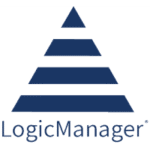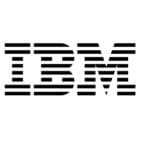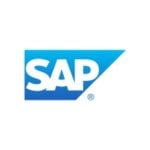GRC

A well-planned strategy can improve decision-making, allow for optimal information technology investments, eliminate silos, and reduce fragmentation among divisions and departments.
Specifically, the three pillars of GRC are:
- Governance involves the effective, ethical management of a company by its executives and managerial levels. These activities make sure that critical management information is complete, accurate, and timely to enable decision making and provide the control mechanisms for strategies, directions, and instructions to be effectively carried out.
- Risk involves the ability to effectively and cost-efficiently mitigate risks that can hinder an organization’s operations or ability to remain competitive in its market. Risk responses typically depend on the perceived importance and involve controlling, avoiding, accepting, or transferring them to a third party.
- Compliance is a company’s conformance with regulatory requirements for business operations, data retention, and other business practices. Compliance is achieved through identifying the applicable requirements, assessing the state of compliance, assessing the risks and potential costs of non-compliance, and prioritizing, funding, and initiating any corrective actions.
How to implement GRC
Any organization, whether large or small, public or private, can implement GRC. To successfully implement a strategy, there are five key steps to take:
- Define what GRC means to your organization.
- Survey your organization’s regulatory and compliance landscape.
- Determine the most logical entry point and develop a phased approach.
- Establish a clear business case, considering both short-term and long-term value.
- Determine how success will be measured.
Want to learn more about developing a GRC strategy? Read more: The GRC Framework: A Practical Guide to GRC
GRC tools
Once an organization has solid policies and procedures in place, investing in a GRC solution can assist in making significant advances in performance, decision-making, risk awareness, and digital transformation. Benefits of using a GRC tool include:
- Enhanced agility: A GRC tool provides the tools needed to analyze risks and opportunities, making launching a new product or reacting to market changes faster and more efficient.
- Fragmentation and data silo elimination: Sharing data across business units, departments, and risk and compliance functions eliminates data silos and enables accurate risk assessment.
- Risk and compliance activity streamlining: A GRC tool can be implemented within days or weeks through manual activity automation and repeatable process development. It also streamlines day-to-day tasks.
- Risk information access: Leadership has access to critical information through dashboards and executive reports.
- Proactive preparation: A GRC tool allows organizations to prepare for the future. It inventories and safeguards important business data by managing user and third-party access.
GRC software vendors
Popular GRC software vendors include:
 AuditBoard: A tool for enterprises that need extensive internal audit management,AuditBoard visualizes gap remediation and provides audit training videos. One key area of focus is on SOX compliance: AuditBoard has an entire module dedicated to Sarbanes-Oxley Act (SOX) regulation management.
AuditBoard: A tool for enterprises that need extensive internal audit management,AuditBoard visualizes gap remediation and provides audit training videos. One key area of focus is on SOX compliance: AuditBoard has an entire module dedicated to Sarbanes-Oxley Act (SOX) regulation management.
LogicManager: This cloud-based enterprise GRC solution provides integrated risk  management capabilities like vulnerability detection and assigns a dedicated consultant to each customer. LogicManager offers financial controls and HR environment management.
management capabilities like vulnerability detection and assigns a dedicated consultant to each customer. LogicManager offers financial controls and HR environment management.
IBM OpenPages: OpenPages, a solution for enterprises, analyzes both structured and unstructured data, including data from security systems, for risks. Users can configure workflows to automate GRC tasks with tools like drag and drop. OpenPages integrates with IBM Cognos Analytics for additional risk data.
structured and unstructured data, including data from security systems, for risks. Users can configure workflows to automate GRC tasks with tools like drag and drop. OpenPages integrates with IBM Cognos Analytics for additional risk data.
 MetricStream: An integrated risk management tool with vendor management and cyber compliance features, one of MetricStream’s key differentiators is its focus on environmental, social, and governance (ESG) policies, which takes environmental risks and standards into consideration. It’s a solution for businesses that are heavily affected by environmental factors.
MetricStream: An integrated risk management tool with vendor management and cyber compliance features, one of MetricStream’s key differentiators is its focus on environmental, social, and governance (ESG) policies, which takes environmental risks and standards into consideration. It’s a solution for businesses that are heavily affected by environmental factors.
 Quantivate: This enterprise GRC and business continuity platform includes IT risk management and procurement for managing sourcing and vendor risks. Quantivate also focuses on disaster recovery, providing consulting sessions with backup and DR experts for an extra fee.
Quantivate: This enterprise GRC and business continuity platform includes IT risk management and procurement for managing sourcing and vendor risks. Quantivate also focuses on disaster recovery, providing consulting sessions with backup and DR experts for an extra fee.
 SAI360: A cloud-based enterprise solution with audit management and process modeling capabilities, SAI360 offers a FastTrack for businesses that want to implement their GRC strategy quickly, offering tools like templates and rapid training.
SAI360: A cloud-based enterprise solution with audit management and process modeling capabilities, SAI360 offers a FastTrack for businesses that want to implement their GRC strategy quickly, offering tools like templates and rapid training.
 SAP GRC: SAP’s features extend into the security realm, including security information and event management (SIEM), access controls, and single sign-on (SSO). SAP is a solution designed for large organizations, particularly enterprises that can manage its wealth of solutions.
SAP GRC: SAP’s features extend into the security realm, including security information and event management (SIEM), access controls, and single sign-on (SSO). SAP is a solution designed for large organizations, particularly enterprises that can manage its wealth of solutions.
 ServiceNow GRC: A key differentiator of enterprise vendor ServiceNow is the operational resilience management product, which includes risk prioritization, monitoring, and impact tolerance testing. Operational resilience management builds on business continuity plans, allowing enterprises to prepare for problems and develop data- based response methods.
ServiceNow GRC: A key differentiator of enterprise vendor ServiceNow is the operational resilience management product, which includes risk prioritization, monitoring, and impact tolerance testing. Operational resilience management builds on business continuity plans, allowing enterprises to prepare for problems and develop data- based response methods.
 StandardFusion: Specifically designed for information security teams, StandardFusion offers compliance management for sixteen standards, including GDPR, PCI-DSS, and SOX . StandardFusion’s risk management provides workflow progress and impact and vulnerability rankings.
StandardFusion: Specifically designed for information security teams, StandardFusion offers compliance management for sixteen standards, including GDPR, PCI-DSS, and SOX . StandardFusion’s risk management provides workflow progress and impact and vulnerability rankings.
Forrest is a writer for Webopedia. Experienced, entrepreneurial, and well-rounded, he has 15+ years covering technology, business software, website design, programming, and more.
